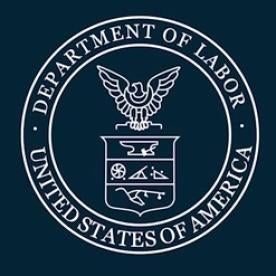The Department of Labor (DOL) recently issued the long-awaited electronic disclosure final regulations providing employers with two new safe harbor methods for electronic delivery of retirement plan disclosures. The final rules are effective July 27, 2020; however, plan administrators may rely on them prior to that date. This Client Alert provides a summary of these new rules.
Optional Safe Harbor Default Methods
The final regulations provide two new optional safe harbor default methods for electronic delivery of certain retirement plan-related disclosures:
-
Notice-and-Access. Under this new safe harbor method, plan administrators may post covered documents on a website, provided the covered individual (defined below) is first provided a notice of internet availability (NOIA) each time a new document is made available through the website.
-
Direct Email Delivery. Under this method, plan administrators may provide covered documents directly via a covered individual’s email address either in the body of the email or as an attachment to the email, provided that the email contains a subject line reading “Disclosure About Your Retirement Plan.” If the covered document is provided as an attachment, the email must also include the same information required under a NOIA and the covered document must meet the same accessibility and readability standards applicable to documents posted on a website, as described below.
Applicability
The new safe harbor disclosure methods are available only for the disclosure of retirement plan-related “covered documents” to “covered individuals.” They are not applicable to welfare benefit plan disclosures.
For purposes of the new safe harbors, “covered documents” generally include any documents and information required to be provided under Title I of ERISA, except for documents that are required to be provided only upon request (e.g., plan documents, latest Form 5500, etc.).
A “covered individual” is a participant, beneficiary, or other individual entitled to covered documents (e.g., alternate payees) who provides the plan administrator, plan sponsor, or employer (or their appropriate designee) with an electronic address, such as an email address or a mobile computing device (e.g., smartphone) number. An email address assigned by an employer to an employee for employment-related purposes, and not solely for the purpose of receiving electronic delivery of covered documents, is treated as having been provided by the employee. The preamble to the final regulations indicates that plan administrators transitioning to the new safe harbor, may treat electronic addresses that are already in the possession of the plan sponsor or plan administrator as having been provided “by” the individual.
Notices
Prior to relying on either of the new safe harbor methods, the plan administrator must deliver to each covered individual (including individuals currently receiving documents under the existing electronic delivery safe harbors) an initial notice in paper form that covered documents will be furnished electronically in the future unless the individual opts out. The initial notice must also include the following information: (a) the electronic address(es) that will be used for the individual, (b) a statement indicating that documents posted on a website are not required to be available for more than a year or, if later, after replacement by a newer version, (c) any instructions necessary to access the covered documents, (d) a statement of the participant’s right, free of charge, to obtain a paper copy of any covered documents, and (e) a statement of the participant’s right to opt out of electronic delivery and an explanation of the procedures for opting out.
If a plan administrator utilizes the notice-and-access safe harbor, the plan administrator must also provide each covered individual, at his or her email address, a NOIA each time a new covered document is made available on the website. Similar to the initial notice, the NOIA must comply with detailed content requirements, including an identification of the covered document, the electronic address at which the document can be accessed (or a hyperlink to the address), statements regarding the covered individual’s right to opt out and receive paper copies free of charge, and a telephone number for contacting the plan administrator or other designated plan representative. No other content may be included in the NOIA, except for pictures or logos as long as they are not misleading and the required content is clear.
To avoid the necessity of providing multiple NOIAs, the regulations permit a consolidated NOIA for certain covered documents. Specifically, a combined NOIA may be provided with respect to a summary plan description, documents or information required to be provided annually rather than upon the occurrence of a certain event and that does not require action by a covered individual by a particular deadline (e.g., summary annual reports, qualified default investment alternative [QDIA] notice, etc.), and any other document authorized by the DOL or the IRS. The consolidated NOIA must be provided at least once every plan year, but not less than once every 14 months.
Protections and Safeguards
The new safe harbor rules contain a number of provisions designed to protect covered individuals and safeguard participants’ confidential information under the plan, including the following:
-
The plan administrator must take reasonable steps to ensure that the website on which documents are posted meets certain minimum standards, including ensuring that:
-
Covered documents are timely provided;
-
Covered documents are presented in a manner understood by the average participant and in a widely available format that may be saved electronically and searched by numbers and letters;
-
Covered documents remain available for one year or, if later, until superseded by a subsequent version; and
-
The website protects the confidentiality of personal information related to each covered individual.
-
-
Covered individuals are provided with the right, free of charge, to obtain a paper copy of specific documents and/or to globally opt out of electronic delivery entirely at any time.
-
The electronic delivery system must be designed to alert the plan administrator of invalid or inoperable electronic addresses. In addition, the plan administrator must take reasonable steps to correct invalid or inoperable addresses. Alternatively, the plan administrator may treat the covered individual as if he or she has opted out of electronic delivery and furnish such covered individual a paper version of the covered documents as soon as reasonably practicable.
-
The plan administrator must maintain a system reasonably calculated to ensure the continued accuracy and availability of a covered individual’s email address, or to obtain a new email address, that enables receipt of covered documents following the individual’s severance from employment.
Prior Safe Harbors
The new safe harbors are in addition to and do not replace the DOL’s existing electronic disclosure safe harbors. Employers and plan administrators currently relying on the existing safe harbor electronic delivery options, based on either required regular work-related access to email or the recipient’s affirmative consent, to satisfy their disclosure obligations may continue to do so. In addition, other DOL guidance providing safe harbor for electronic disclosure of specific documents (such as Field Advisory Bulletin 2006-03, addressing pension benefit statements, Field Advisory Bulletin 2008-03, addressing QDIA notices, and Technical Release 2011-03R, addressing fee disclosures) will remain in effect for a limited period of 18 months following the effective date of the final regulations in order to give plan administrators time to transition into the new safe harbor regime.
Closing Thoughts
Although the new safe harbor rules are limited to retirement plans, they are certainly a step in the right direction, and the DOL is continuing to explore whether to expand the safe harbors (in whole or in part) to welfare plan-related disclosures in the future.
Employers with existing websites may find it easier to migrate to the new notice-and-access safe harbor. However, such employers will need to make a number of operational and administrative changes before they can safely transition into this new safe harbor. Employers who do not have a website will likely find the direct email approach a more logical fit; though as noted above, some retooling of their existing procedures will likewise be necessary.
DOL officials recently confirmed that in implementing the new safe harbors, employers may delay providing the initial paper notice for up to 60 days after the end of the COVID-19 national emergency, consistent with the relief provided under Employee Benefits Security Administration Disaster Relief Notice 2020-01 (EBSA Notice) discussed here. Thus, employers who were in the process of implementing the new safe harbors and were forced to hit the pause button on the initial notices due to the pandemic, may now safely move forward and provide the initial notice electronically in accordance with the EBSA Notice, provided that the paper version is provided as soon as practicable.
Employers who are using the current safe harbors for retirement plan-related disclosures will need to evaluate whether shifting to the new regime will be worth the time and effort, based on their particular circumstances (e.g., size, type of business, costs, employee demographics, etc.). In the meantime, employers can continue to rely on the more relaxed electronic disclosure options under the EBSA Notice to provide plan-related disclosures and other information during the pandemic.
Remember that legal principles may change and vary widely in their application to specific factual circumstances. You should consult with counsel about your individual plan, any plan amendments, and participant notices.





 i
i


